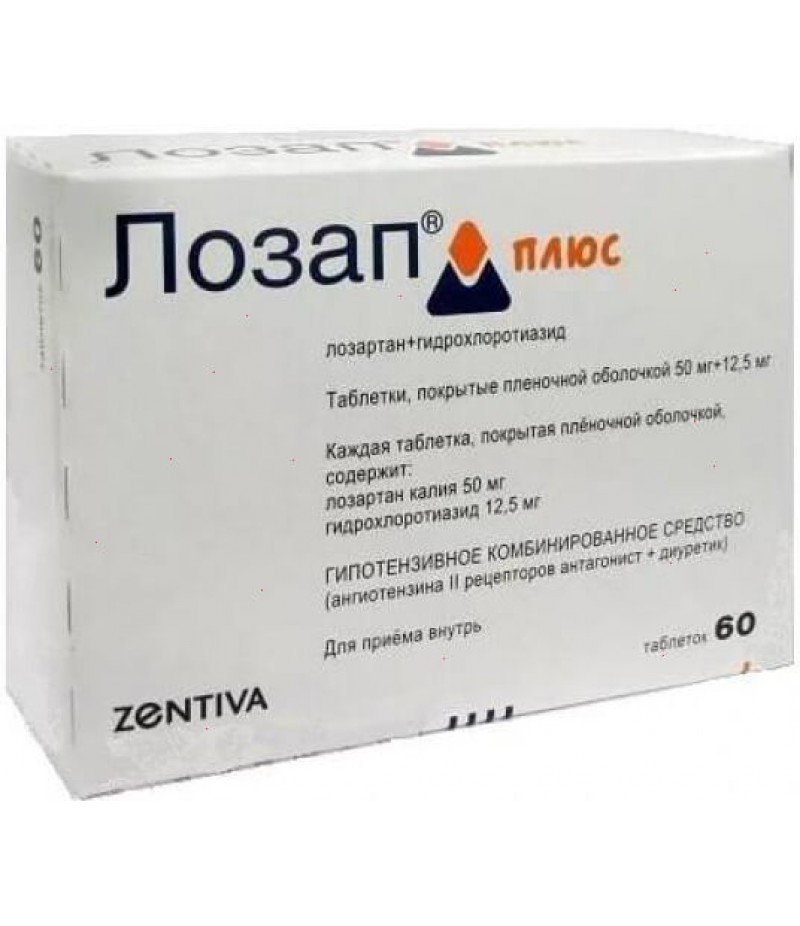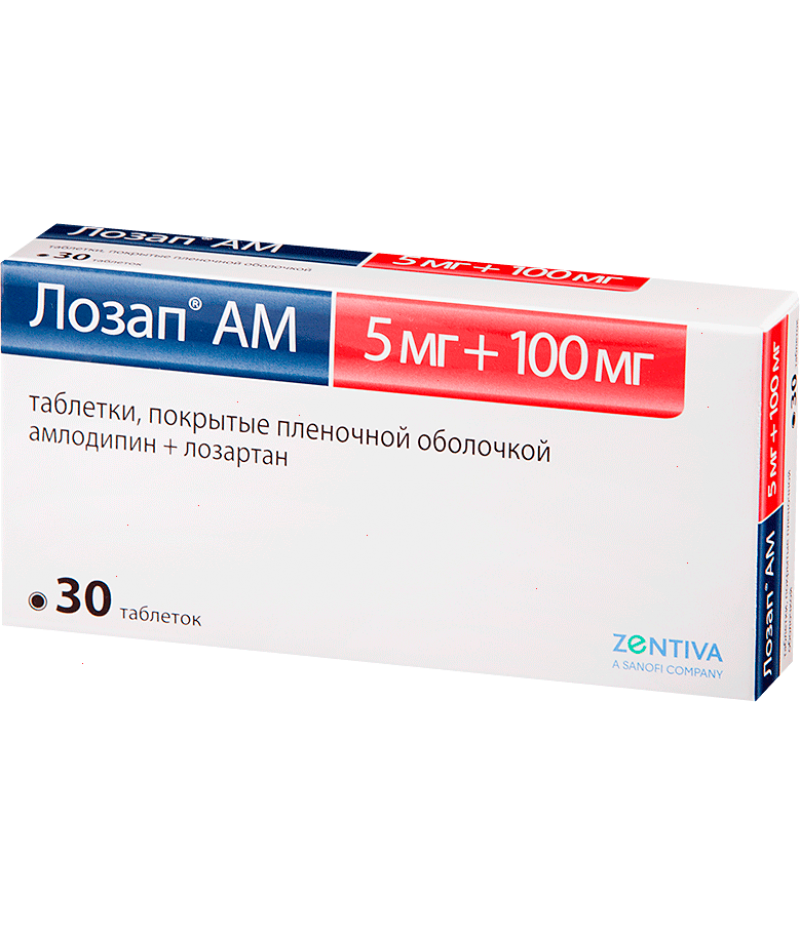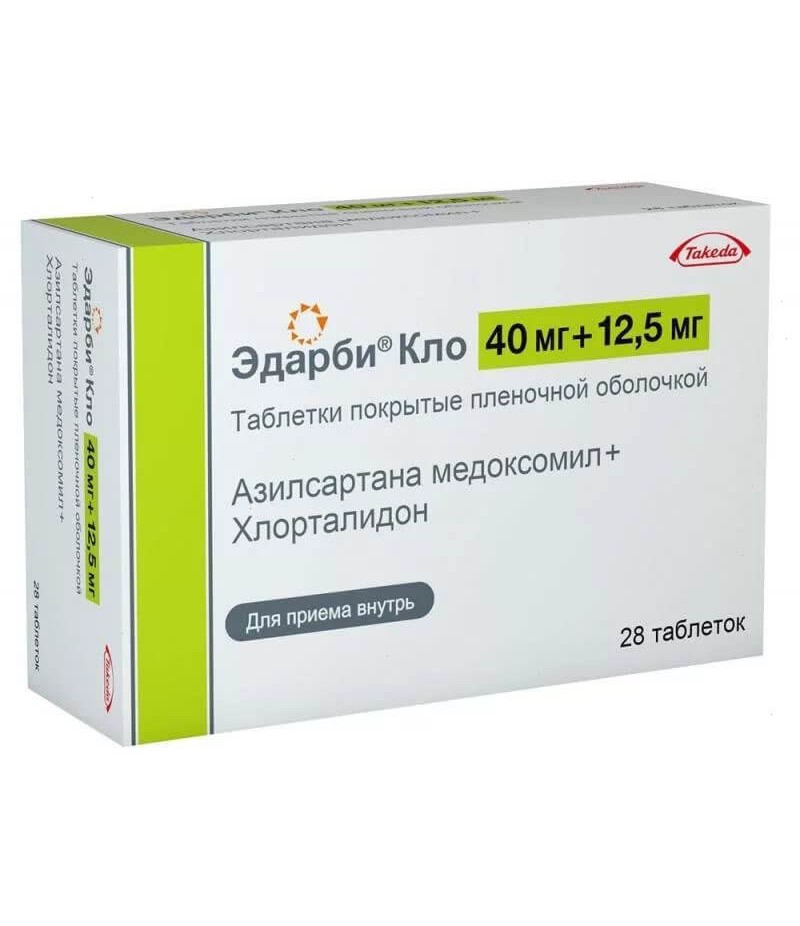Lozap Plus tabs 50mg + 12.5mg #60
- $33.37
- 3 or more $33.15
- Availability:In Stock
Lozap Plus instruction for useYou can buy Lozap Plus hereLozap Plus is a combined, antihypertensive drug. Contains potassium losartan - angiotensin II receptor antagonist (AT1 subtype) and hydrochlorothiazide - diuretic.Losartan i..
Tags: tabs
Lozap Plus instruction for use
You can buy Lozap Plus here
Lozap Plus is a combined, antihypertensive drug. Contains potassium losartan - angiotensin II receptor antagonist (AT1 subtype) and hydrochlorothiazide - diuretic.
Losartan is a specific angiotensin II receptor antagonist (subtype AT1). Does not suppress kinase II - an enzyme that destroys bradykinin. It lowers the OPSS, the concentration of adrenaline and aldosterone in the blood, blood pressure, pressure in the pulmonary circulation; reduces afterload, has a diuretic effect. Interferes with the development of myocardial hypertrophy, increases exercise tolerance in patients with chronic heart failure.
Hydrochlorothiazide - thiazide diuretic. Reduces the reabsorption of sodium ions, increases urinary excretion of potassium ions, bicarbonate and phosphates. It lowers blood pressure by reducing the bcc, changing the reactivity of the vascular wall, reducing the pressure of the vasoconstrictor substances and increasing the depressant effect on the ganglia.
Pharmacokinetics
After oral administration, losartan and hydrochlorothiazide are rapidly absorbed from the gastrointestinal tract. The bioavailability of losartan is about 33%. The time to reach Cmax of losartan is 1 hour, its active metabolite is 3-4 hours.
Distribution
The binding of losartan to plasma proteins is 99%.
Losartan undergoes a “first pass” effect through the liver, is metabolized by carboxylation to form an active metabolite.
Hydrochlorothiazide is not metabolized in the liver.
T1 / 2 losartan - 1.5-2 hours, and its main metabolite 3-4 hours. About 35% of the dose is excreted in the urine, about 60% - in the feces.
T1 / 2 hydrochlorothiazide is 5.8-14.8 hours. About 61% is excreted in the urine unchanged.
Indications for use
The drug Lozap Plus is used for hypertension (in patients for whom combination therapy is optimal); reduce the risk of cardiovascular disease and mortality in patients with arterial hypertension and left ventricular hypertrophy.
Mode of application
Lozap Plus drug is taken orally, regardless of the meal.
With arterial hypertension, the usual initial and maintenance dose is 1 tab. / Day. If the use of the drug in this dose fails to achieve adequate blood pressure control, the dose of Lozap Plus may be increased to 2 tab. 1 time / day
The maximum dose is 2 tab. 1 time / day.
In general, the maximum hypotensive effect is achieved within 3 weeks after the start of treatment.
There is no need for a special selection of the initial dose in elderly patients.
In order to reduce the risk of developing cardiovascular diseases and mortality in patients with arterial hypertension and left ventricular hypertrophy, lozartan (Lozap) is prescribed in the standard initial dose of 50 mg / day. Patients who failed to achieve the target level of blood pressure while using losartan at a dose of 50 mg / day require selection of therapy by combining losartan with hydrochlorothiazide at a low dose (12.5 mg), which is ensured by administering Lozap Plus. If necessary, the dose of Lozap Plus can be increased to 2 tab. (100 mg of losartan and 25 mg of hydrochlorothiazide) 1 time / day.
Side effects of Lozap Plus
In clinical studies with losartan - hydrochlorothiazide, no adverse reactions associated with the combination of drugs were observed.
Adverse reactions are limited to previously observed with the use of losartan and / or hydrochlorothiazide separately.
In controlled clinical trials for the treatment of essential hypertension in patients treated with losartan and hydrochlorothiazide, the only adverse reaction that occurred with a frequency of 1% or more compared to placebo was dizziness. In addition, there are other side reactions reported in the process of applying a combination of losartan / hydrochlorothiazide:
On the part of the liver and biliary tract: rare - hepatitis.
From the laboratory and instrumental studies: rare - hyperglycemia, increased activity of hepatic transaminases.
In addition, when using losartan / hydrochlorothiazide, the following adverse reactions may be observed, observed with the use of each of the components:
Losartan
From the side of blood and lymphatic system: infrequent - anemia, Schönlein-Genoch disease, ecchymosis, hemolysis.
On the part of the immune system: rare - anaphylactic reactions, angioedema (swelling of the larynx and / or tongue, swelling of the face, lips, pharynx), urticaria.
Metabolism and nutrition: infrequent - anorexia, gout.
On the part of the psyche: frequent - insomnia; infrequent - anxiety, anxiety, panic attacks, confusion, depression, unusual dreams, sleep disturbance, drowsiness, impaired memory.
From the nervous system: frequent - headache, dizziness; infrequent - increased excitability, paresthesia, peripheral neuropathy, tremor, migraine, syncope.
On the part of the organ of vision: infrequent - blurred vision, burning sensation in the eyes, conjunctivitis, decreased visual acuity.
On the part of the organ of hearing and labyrinth disorders: infrequent - vertigo, ringing in the ears.
Of the heart: infrequent - hypotension, orthostatic hypotension, pain in the sternum area, angina, AV-block II degree, cerebrovascular accident, myocardial infarction, palpitations, arrhythmias (atrial fibrillation, sinus bradycardia, tachycardia, ventricular tachycardia, ventricular fibrillation).
From the side of the vessels: infrequent - vasculitis.
From the side of the respiratory system: frequent - cough, upper respiratory tract infections, nasal congestion, sinusitis; infrequent - pharyngitis, laryngitis, dyspnea, bronchitis, nosebleeds, rhinitis.
From the side of the gastrointestinal tract: frequent - abdominal pain, nausea, diarrhea, dyspepsia; infrequent - constipation, toothache, dry mouth, flatulence, gastritis, vomiting.
On the part of the liver and biliary tract: the frequency is unknown - impaired liver function.
On the part of the skin and subcutaneous tissues: infrequent - alopecia, dermatitis, dry skin, erythema, hyperemia, photosensitivity, itching, rash, sweating.
On the part of the musculoskeletal system and connective tissue: frequent - muscle cramps, back pain, pain in the legs, sciatica; infrequent - joint swelling, muscle and bone pain, joint stiffness, arthralgia, arthritis, fibromyalgia, muscle weakness; frequency unknown rhabdomyolysis.
On the part of the kidneys and urinary tract: infrequent - nocturia, imperative urination, urinary tract infection.
On the part of the reproductive system: infrequent - decreased libido, decreased potency.
On the part of the body as a whole: frequent - asthenia, fatigue, chest pain; infrequent - puffiness of the person, fever.
From the laboratory and instrumental studies: frequent - hyperglycemia, a slight decrease in hematocrit and hemoglobin; infrequent - slightly increased levels of urea and serum creatinine; very rare - increased levels of hepatic transaminases and bilirubin.
Hydrochlorothiazide
From the hematopoietic system: infrequent - agranulocytosis, aplastic anemia, hemolytic anemia, leukopenia, purpura, thrombocytopenia.
On the part of the immune system: rare - anaphylactic reactions up to shock.
Metabolism: Infrequent - anorexia, hyperglycemia, hyperuricemia, hypokalemia, hypomagnesemia, hyponatremia, hypercalcemia, hypochloraemic alkalosis.
On the part of the psyche: infrequent - insomnia.
From the nervous system: infrequent - headache.
On the part of the organ of vision: infrequent - a temporary decrease in visual acuity, xantopsia.
On the part of the vessels: infrequent - necrotic vasculitis, skin vasculitis.
Respiratory system disorders: infrequent - respiratory distress syndrome, including pneumonitis and non-cardiogenic pulmonary edema.
On the part of the digestive tract: infrequent - sialadenitis, spasms, gastritis, nausea, vomiting, diarrhea, constipation.
On the part of the liver and biliary tract: infrequent - cholestatic jaundice, cholecystitis, pancreatitis.
Skin and subcutaneous tissues: infrequent - photosensitivity, urticaria, toxic epidermal necrolysis.
On the part of the musculoskeletal system and connective tissue: infrequent - muscle cramps.
On the part of the kidneys and urinary tract: infrequent - glycosuria, interstitial nephritis, impaired renal function, renal failure.
On the part of the body as a whole: infrequent - fever, dizziness.
Contraindications
Contraindications to the use of the drug Lozap Plus are: hypokalemia or hypercalcemia resistant to treatment; severe liver dysfunction; obstructive diseases of the biliary tract; refractory hyponatremia; hyperuricemia and / or gout; severe impaired renal function (CK≤30 ml / min); anuria; pregnancy; breastfeeding period; age up to 18 years (efficacy and safety have not been established); Hypersensitivity to any of the components of the drug or to other drugs that are derivatives of sulfonyl amide.
With caution prescribed to patients with bilateral renal artery stenosis or arterial stenosis of a single kidney, hypovolemic conditions (including diarrhea, vomiting), hyponatremia (increased risk of arterial hypotension in patients on a low-salt or salt-free diet), hypochloraemic alkalosis, hypomagnesemia, connective tissue diseases (including SLE), patients with impaired liver function or with progressive liver diseases, diabetes mellitus, bronchial asthma (including history), burdened with allergic history, simultaneously with NSAIDs, including COX-2 inhibitors, as well as members of the Negroid race.
Pregnancy
Use during pregnancy drug Lozap Plus
Angiotensin II Receptor Antagonists (ARA II)
The use of angiotensin II receptor antagonists during pregnancy is contraindicated.
Patients planning a pregnancy should switch to alternative antihypertensive treatment with a safety profile. If pregnancy is diagnosed during Lozap Plus treatment, the therapy should be immediately stopped and alternative treatment should be initiated.
It is known that treatment with angiotensin II receptor antagonists in trimesters II and III leads to a fetotoxic effect (reduced kidney function, lack of water, delayed ossification of the skull), as well as toxicity to the newborn (renal failure, hypotension, hyperkalemia).
In the case of Lozap Plus in the II and III trimesters of pregnancy, an ultrasound scan of the kidney and fetal skull is recommended.
Children whose mothers took Lozap Plus during pregnancy should be carefully monitored for the development of arterial hypotension.
Hydrochlorothiazide
Experience with hydrochlorothiazide during pregnancy, especially during the first trimester, is limited. Animal studies are insufficient. Hydrochlorothiazide penetrates the placental barrier and is determined in umbilical cord blood. Based on the pharmacological mechanism of action of hydrochlorothiazide, its use during pregnancy may worsen the feto-placental blood flow and lead to abnormalities in the fetus and newborn, such as jaundice, electrolyte imbalance and thrombocytopenia.
Use of the drug Lozap Plus is contraindicated during pregnancy.
Use during breastfeeding
Angiotensin II Receptor Antagonists
In connection with the lack of information on the use of the drug Lozap Plus during the breastfeeding period, the prescription of the drug during this period is contraindicated. During the period of breastfeeding, preference is given to alternative treatment with a more studied safety profile.
Hydrochlorothiazide
Hydrochlorothiazide is excreted in breast milk. Thiazides can cause intense diuresis and can inhibit milk production. Therefore, the use of the drug Lozap Plus during breastfeeding is contraindicated.
Interaction with other drugs
Losartan
Cases of a decrease in the concentration of the active metabolite with the combined use of rifampicin and fluconazole have been described. Evaluation of the clinical data of such interactions was not conducted.
As with other drugs that block angiotensin II or its effects, the simultaneous use of potassium-saving diuretics (for example, spironolactone, triamterene, amiloride), potassium preparations, or potassium-containing salt substitutes may lead to an increase in serum potassium levels. The combined use of these drugs is not recommended. As with other drugs that affect the excretion of sodium, the drug can slow the excretion of lithium. Therefore, with the simultaneous appointment of lithium salts and ARA II, it is necessary to carefully monitor the level of lithium salts in the blood serum.
With the simultaneous use of ARA II and NSAIDs, for example, selective COX-2 inhibitors, acetylsalicylic acid in doses used for the anti-inflammatory effect, and non-selective NSAIDs, a weakening of the antihypertensive effect of Lozap Plus may be observed. The simultaneous use of ARA II or diuretic drugs and NSAIDs may be the reason for the increased risk of deterioration of renal function, including acute renal failure and increased serum potassium levels, especially in patients with initial impaired renal function. Combined treatment should be prescribed with caution, especially in elderly patients. Patients should be adequately hydrated and renal function should be monitored after the start of the combined treatment and periodically during the treatment process.
In some patients with impaired renal function, receiving NSAIDs, including selective inhibitors of COX-2, the simultaneous use of angiotensin II receptor antagonists can exacerbate renal dysfunction. These effects are usually reversible.
Other drugs that cause hypotension, such as tricyclic antidepressants, antipsychotics, baclofen, amifostine: simultaneous use of Lozap Plus with these drugs that reduce blood pressure may increase the risk of arterial hypotension.
Hydrochlorothiazide
When taken simultaneously with thiazide diuretics, interaction with the following substances can be observed:
Alcohol, barbiturates, opioid analgesics or antidepressants: the risk of orthostatic hypotension may increase.
Antidiabetic drugs (insulin and oral products): treatment with thiazide diuretics can affect glucose tolerance.
Dosage adjustment of antidiabetic drugs may be required. Metformin should be used with caution because of the risk of lactic acidosis caused by possible functional renal failure associated with the use of hydrochlorothiazide.
Other antihypertensive drugs: additive effect.
Kolestiramin and colestipol: in the presence of ion exchange resins the absorption of hydrochlorothiazide is disturbed. Taking a single dose of colestyramine or colestipol leads to the binding of hydrochlorothiazide and a decrease in its absorption from the gastrointestinal tract by 85% and 43%, respectively.
Corticosteroids, ACTH: Possible exacerbation of electrolyte deficiency, especially hypokalemia.
Pressor amines (for example, adrenaline): a decrease in the effect of pressor amines is possible, however, it does not exclude their use.
Non-polarizing muscle relaxants (for example, tubocurarine chloride): may increase the effects of muscle relaxants.
Lithium preparations: diuretics reduce the renal clearance of lithium and significantly increase the risk of its toxic effects. It is recommended to avoid the simultaneous use of hydrochlorothiazide with lithium preparations.
Drugs for treating gout (probenecid, sulfinpirazon, and allopurinol): You may need to adjust the dose of anti-gout drugs, since hydrochlorothiazide may increase serum uric acid levels. Combined use with thiazides may increase the incidence of hypersensitivity reactions to allopurinol.
Anticholinergic drugs (for example, atropine, biperidine): it is possible to increase the bioavailability of thiazide diuretics by reducing gastrointestinal motility and the rate of gastric emptying.
Cytotoxic drugs (for example, cyclophosphamide, methotrexate): thiazide diuretics can inhibit the elimination of cytotoxic drugs through the kidneys and enhance their myelosuppressive effect.
Salicylates: if high doses of salicylates are used, hydrochlorothiazide may increase their toxic effects on the central nervous system.
Methyldopa: isolated cases of hemolytic anemia have been described in patients simultaneously receiving hydrochlorothiazide and methyldopa.
Cyclosporine: Concomitant treatment with cyclosporine may increase the risk of hyperuricemia and complications of gout.
Cardiac glycosides: hypokalemia or hypomagnesemia caused by thiazide diuretics, may contribute to the development of arrhythmias induced by digitalis preparations.
Drugs that are affected by changes in serum potassium levels: while coadministration of Lozap Plus with drugs that are affected by changes in potassium levels (eg, digitalis glycosides and antiarrhythmic drugs), it is recommended to regularly monitor serum potassium and ECG monitoring.
These measures are also recommended for simultaneous use of Lozap Plus with the following drugs that can cause ventricular tachycardia of the "pirouette" type (including antiarrhythmic), since hypokalemia is a factor predisposing to the development of pirouette tachycardia: Class IA antiarrhythmic drugs (for example, quinidine, hydroquinidine, disopyramide), class III antiarrhythmic drugs (for example, amiodarone, sotalol, dofetilide, ibutilide), some antipsychotic drugs (for example, thioridazine, chlorpromazine, le vomepromazin, tfluozarzin, tsamemazin, sulprid, sifridd, amisulpride, tiaprid, pimozid, haloperidol, dimmerase, dimmerase
Calcium salts: thiazide diuretics can increase serum calcium levels by reducing calcium excretion. If the patient is taking calcium supplements, it is necessary to monitor the level of calcium in the blood serum and, accordingly, adjust the dosage of calcium supplements.
Impact on laboratory results: Due to the effect on calcium metabolism, thiazides may distort test results to assess the function of the parathyroid glands.
Carbamazepine: there is a risk of symptomatic hyponatremia. Clinical observation and laboratory monitoring of blood sodium levels in patients taking carbamazepine is necessary.
Iodine-containing contrast agents: in the case of dehydration caused by the use of diuretics, the risk of developing acute renal failure increases, especially when taking high doses of iodine preparations. Before their introduction, patients should be rehydrated.
Amphotericin B (for parenteral administration), GCS, ACTH, stimulant laxatives or glycyrrhizin (contained in licorice): hydrochlorothiazide can cause the development of electrolyte deficiency, especially hypokalemia.
Overdose with Lozap Plus
There is no data on the specific treatment of an overdose with Lozap Plus. The drug Lozap Plus should be discontinued, and the patient should be monitored. In case of overdose, symptomatic therapy is indicated: gastric lavage if the drug is taken recently, as well as elimination of dehydration, electrolyte abnormalities and reduction of blood pressure by standard methods (restoration of blood volume and water-electrolyte balance).
Losartan
The most frequent symptoms of overdose are marked reduction in blood pressure and tachycardia; bradycardia may be a consequence of parasympathetic (vagal) stimulation.
In the case of symptomatic arterial hypotension, supportive infusion therapy is indicated. Losartan and its active metabolite are not excreted by hemodialysis.
Hydrochlorothiazide
The most frequent symptoms of overdose are due to electrolyte deficiency (hypokalemia, hypochloremia, hyponatremia) and dehydration due to excessive diuresis. With simultaneous intake of cardiac glycosides, hypokalemia can aggravate the course of arrhythmias.
There is no specific antidote for overdosing with hydrochlorothiazide. It has not been established to what extent hydrochlorothiazide can be removed from the body through hemodialysis.
Storage conditions
List B. The drug Lozap Plus should be stored in a dry place inaccessible to children at a temperature not exceeding 30 ° C. Shelf life - 3 years.
Release form
Lozap Plus - pills. № 10, № 30 (10 хЗ), № 90 (10х9): 10 tablets per blister; 1, 3 or 9 blisters in a carton.
Composition
1 tablet Lozap Plus contains losartan potassium 50 mg, hydrochlorothiazide 12.5 mg;
excipients: mannitol (E 421), microcrystalline cellulose, sodium croscarmellose, povidone, magnesium stearate, hypromellose, macrogol 6000, talc, simethicone emulsion, Opasprey yellow M-1-22801 (contains: titanium dioxide (E 171), methylated industrial alcohol , hypromellose, quinoline yellow (E 104), Ponso 4R (E124)).
Terms of sell
You can buy Lozap Plus without a prescription.




